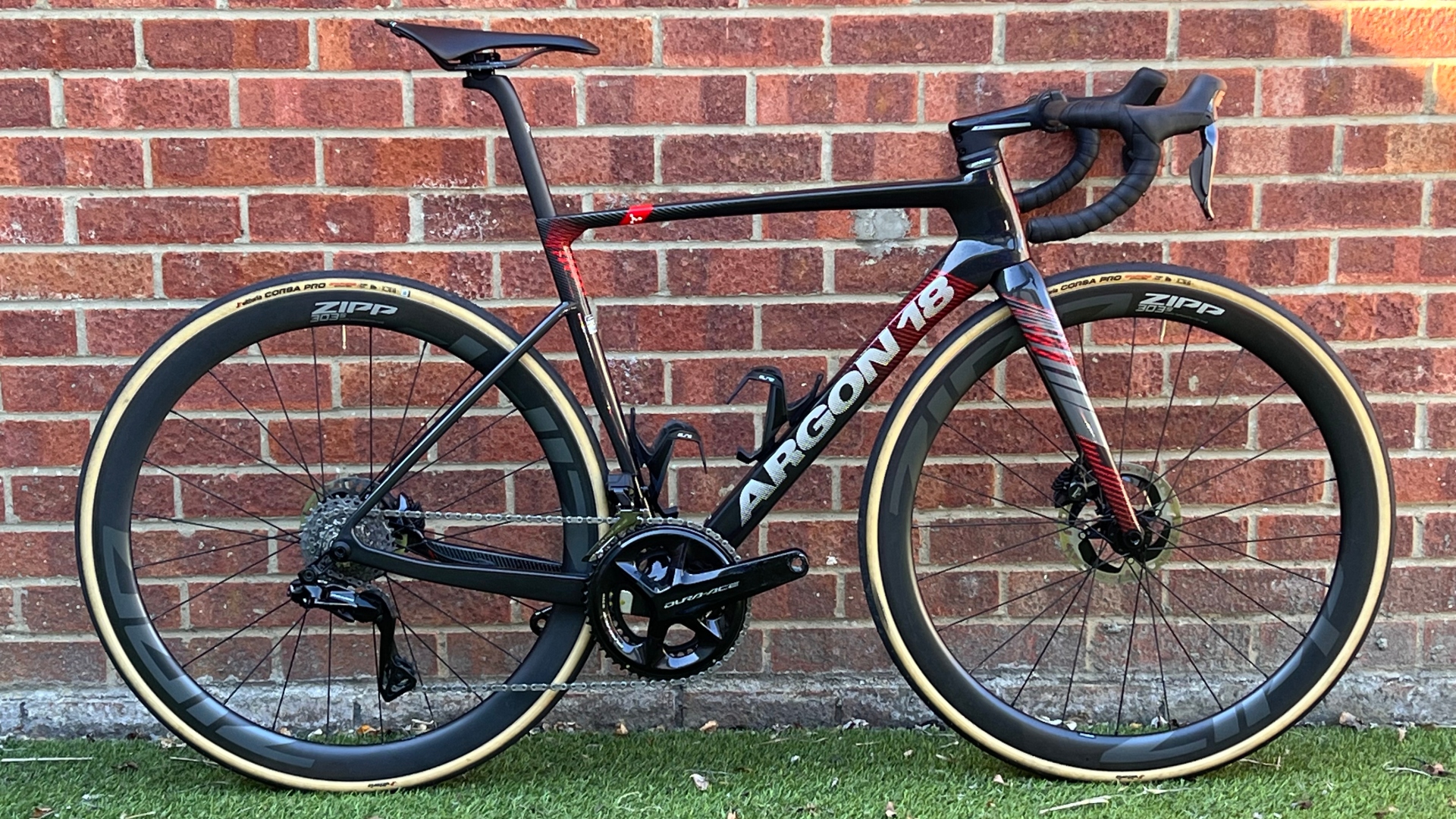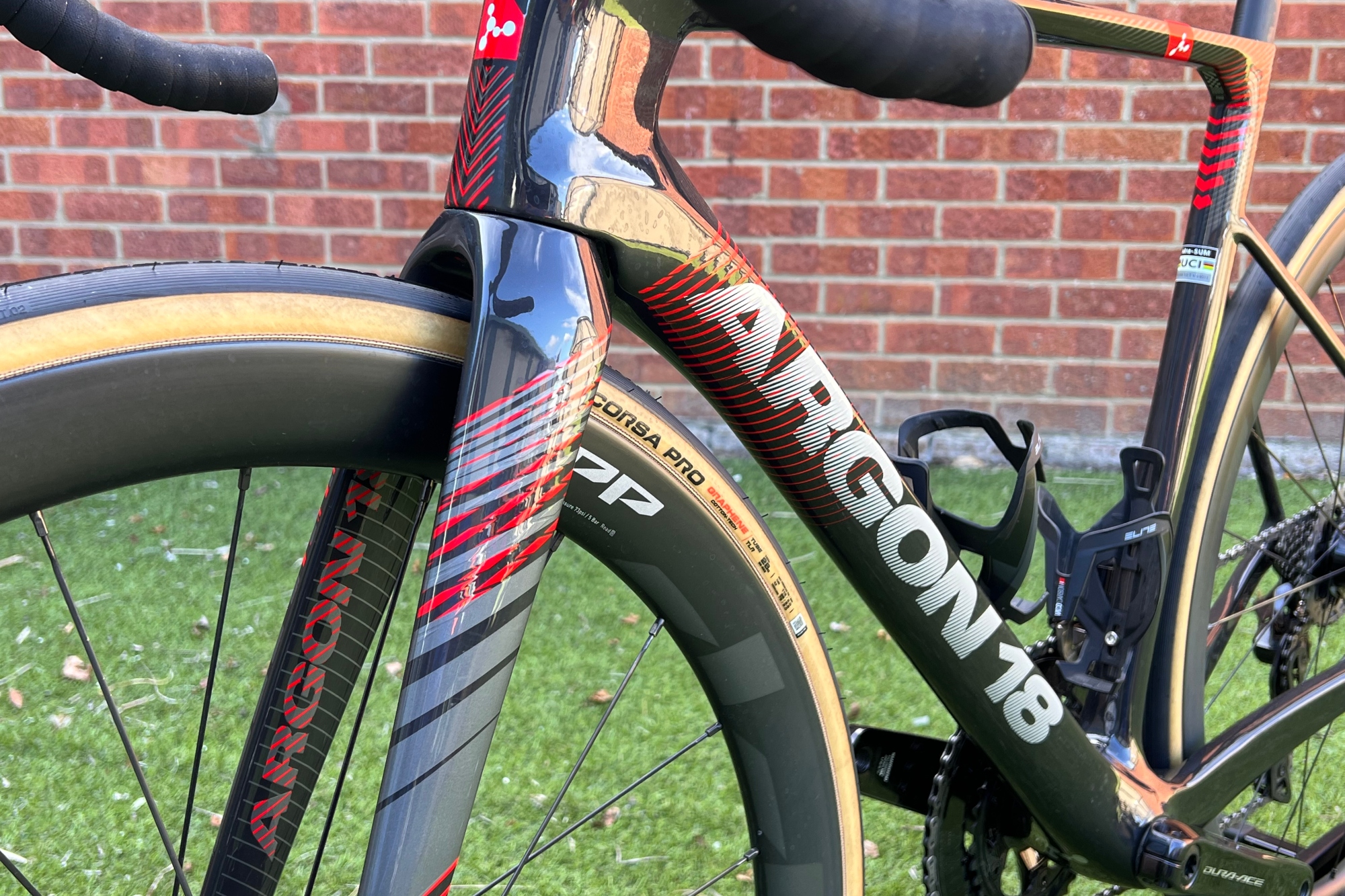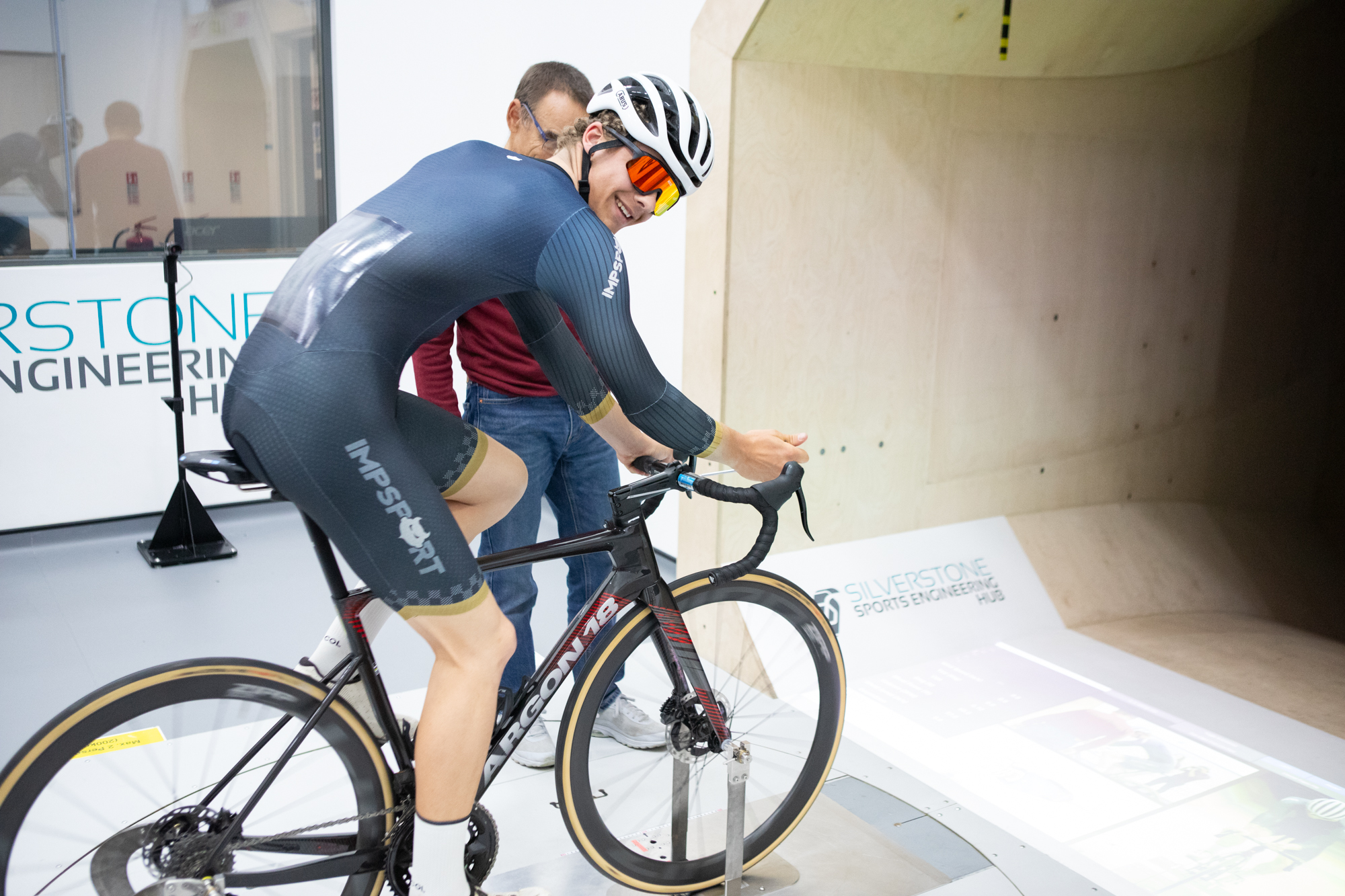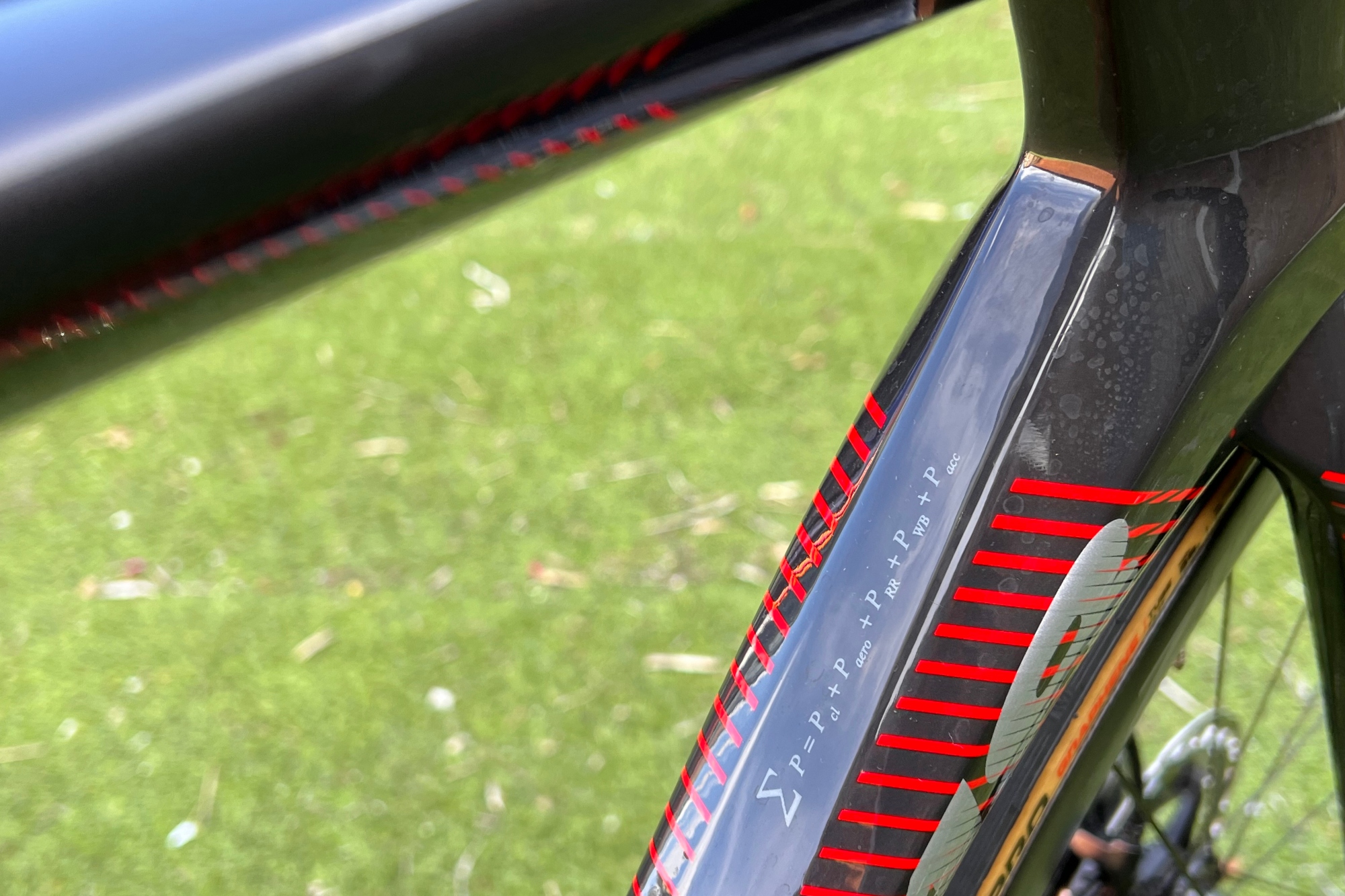
The Argon 18 Sum Pro is certainly one of the more interesting bikes on the market in 2024. The Canadian bicycle manufacturer, founded in 1989 by former professional cyclist Gervais Rioux, doesn't currently have a division one sponsored team, and therefore isn't often seen on our TV screens - but that doesn't mean the brand doesn't make great bikes.
The Sum Pro goes toe-to-toe with the best road bikes on the market across all categories, and when it comes to value and comfort, I think Argon 18 has a lot of the competition beat. A top of the range road bike that doesn't beat you up on a 4-hour ride is no mean feat to engineer, and I think Argon 18 has done just that.
Argon 18 Sum Pro: Construction
The frameset
Argon 18’s says the new Sum Pro blends the best elements of its predecessors, bringing together the aero performance of the Nitrogen and the climbing prowess of the Gallium Pro. Aesthetically at least, you can certainly see some hereditary features. The Sum Pro represents Argon 18’s most advanced carbon layup, which the brand says is engineered for optimal power transfer, stiffness, and compliance across all terrain. The frame is also available in a slightly lower-spec carbon layup, which forgoes the 'Pro' branding.
Like pretty much every modern-day bike on the market, the Sum Pro features an aerodynamic design that started out with complex Computational Fluid Dynamics (CFD) analysis. The frame's hourglass-shaped headtube is optimized to reduce drag, and has been made deeper from back to front to improve stiffness. The flared fork legs are shaped to direct air away from the downtube, enhancing airflow while maintaining lateral stiffness.
These aerodynamic features result in a claimed 75-second gain over the Gallium Pro Disc on challenging climbing stages, such as La Planche des Belles Filles - claims made using a real-world power data model.

But as important as aero is, an all-round race bike has to be lightweight too. Argon 18 has managed to keep the frame weight low by slimming down some of the Sum Pro’s tube profiles, including the D-shaped seat post, narrow seat stays, and optimized downtube. The result is a painted frame weight of 850 grams, which, for the cost of the bike, is fairly respectable. For comparison, the Van Rysel RCR Pro's frameset weighs 790 grams for a similar size, and the Merida Scultura sits at 830g.
Argon 18 has also put a lot of emphasis on the comfort, a quality that is blissfully tangible on the road. The Sum Pro offers an impressive combination of compliance and stiffness, thanks in no small part to nowadays common dropped seat stays and a slimmed-down seat post. And if you want to improve comfort further, the Sum Pro has clearance for tyres up to 30mm. This is all said to contribute to a 30-35% improvement in rear compliance over the Gallium Pro - I haven't ridden the Gallium, but the Sum Pro is decidedly supple.
The build...
The build itself is slightly more of a mixed bag. Gear changes are handled by the ever-reliable rock that is Shimano's Dura-Ace R9270 Di2, which worked faultlessly.

Alongside the Shimano groupset, is a set of Zipp 303s carbon wheels. It is slightly unusual to find a Shimano groupset next to Sram subsidiary wheels, but the 45mm deep wheels do make a good pairing for the frameset. The 1,525g wheelset features hookless rims, and are optimized for 28mm tyres, which once again plays into the Sum Pro's emphasis on comfort.
The cockpit setup is a two-piece affair, not carrying the flare of a one-piece setup, however, this does have its upsides. FSA provides its ACR stem and SL-K compact handlebar for the cockpit, making for a mix of alloy and carbon fiber upfront. The combination of traditional round bars, and a slightly heavier alloy stem does make the Sum Pro slightly less attractive than some of its rivals. However, it does remain slightly easier to change position post-purchase, which shouldn't be ignored. This ease of adjusting for bike fit came in particularly useful when we took it to the wind tunnel earlier this year...
Argon 18 Sum Pro: the ride
I have been lucky enough to ride the Argon 18 Sum Pro in a whole host of different capacities, on my usual home roads, as well as in the World's most expensive turbo trainer - the Silverstone Sports Engineering Hub's Performance Wind Tunnel.
But let's start with first impressions. As with all my bike tests, I initially took the Sum Pro for a 30km shakedown on a local route, which features a little bit of everything. Steep climbs, some corners I know well, and some very, very bumpy tarmac. The bike handled all of this pretty well, and from the gun felt fairly playful too - something not all modern-day bikes manage to harbor.

But I found it was when I took the Sum Pro on a longer jaunt around the Cotswolds that the bike really began to shine. My home roads in Oxfordshire are known among the local cycling community for being in very poor condition, but aboard the Sum Pro, this was far less noticeable. The frame, along with the 28mm Vittoria Corsa Pro tires, were fantastically supple and did a stellar job at eliminating road buzz.
What makes this quality quite so significant, is that the bike remains firmly under the race bike category. The Sum Pro doesn't quite have the electric response of something like the Giant TCR which I recently tested, but it is well and truly in the same ballpark and comes in at a lower cost too.

I also took the Sum Pro on some faster chaingang group rides in order to get a feel for how the bike handled in a slightly more competitive environment, and once again it performed very well. The bike feels totally at home when things get fast and also remained very stable when committing a little harder to the corners too.
Overall, the Sum Pro provides a poised ride feel, bringing together a fairly aggressive geometry with a carbon layup that allows you to stay comfortable for long periods in the saddle. It's a combination that, I think, is brilliant for most amateur racers. No, it might not be quite as stiff as some of the big-name competition, but the truth is, there isn't too much in it - at least, not enough to be noticeable to us mere mortals.
Argon 18 Sum Pro: value
The Argon 18 Sum Pro is priced at £8,500/$8,950, and quite frankly, for the ride quality you get, I think this is good value. For that price, you are getting a top-spec groupset, and a high-quality frameset. That said, I do think the finishing kit lets the bike down slightly. It's all very capable, but an aero cockpit of some description would do wonders to narrow the gap between the Sum Pro and some of its more expensive competition.
An obvious competitor would be the Van Rysel RCR Pro, which comes in at £9000/$ 10,999 for the top-spec model. Though I haven't tested this exact spec, I can say that I think the Argon 18 offers a more rewarding ride than the RCR Pro, but when you consider the Sum Pro's slightly heavier weight at 7.3kg it's pretty close between the two.
Overall, It's high praise for the Argon 18 Sum Pro, especially if you are a racer looking to take the edge off rougher tarmac.







